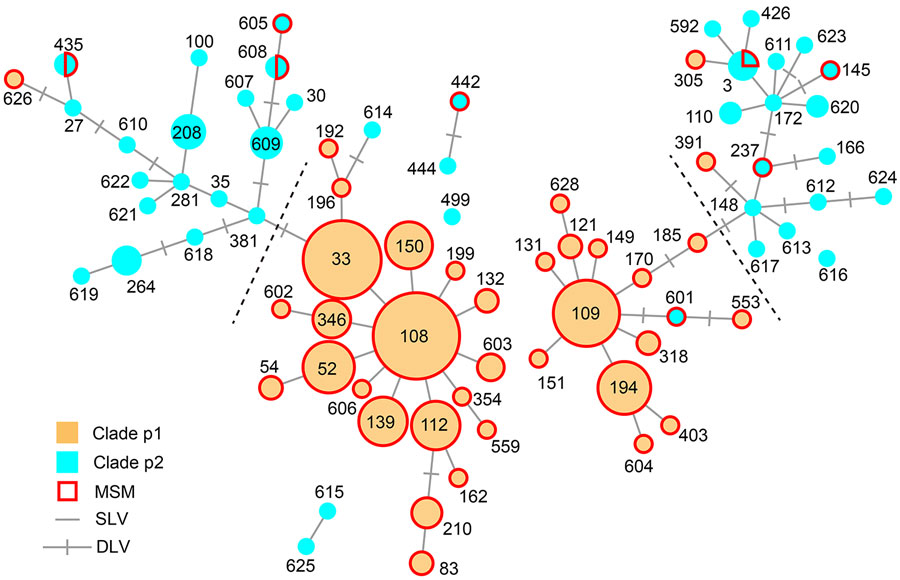Volume 30, Number 10—October 2024
Dispatch
Clustering of Polymorphic Membrane Protein E Clade in Chlamydia trachomatis Lineages from Men Who Have Sex with Men
Figure 3

Figure 3. Minimum spanning tree based on sequence types (STs) and polymorphic membrane protein E (PmpE) of 298 Chlamydia trachomatis samples in study of clustering of specific PmpE clade in C. trachomatis lineages from MSM, Japan. Each node indicates the ST number. SLVs and DLVs are linked. Samples from MSM are outlined in red, reflecting the proportion of samples in each node. The PmpE clades p1 and p2 are colored using the same color codes as those used in Figure 2. Dashed lines are the assumed borders between the MSM and non-MSM lineages. DLV, double-locus variant; MSM, men who have sex with men; SLV, single-locus variant.
Page created: September 04, 2024
Page updated: September 23, 2024
Page reviewed: September 23, 2024
The conclusions, findings, and opinions expressed by authors contributing to this journal do not necessarily reflect the official position of the U.S. Department of Health and Human Services, the Public Health Service, the Centers for Disease Control and Prevention, or the authors' affiliated institutions. Use of trade names is for identification only and does not imply endorsement by any of the groups named above.